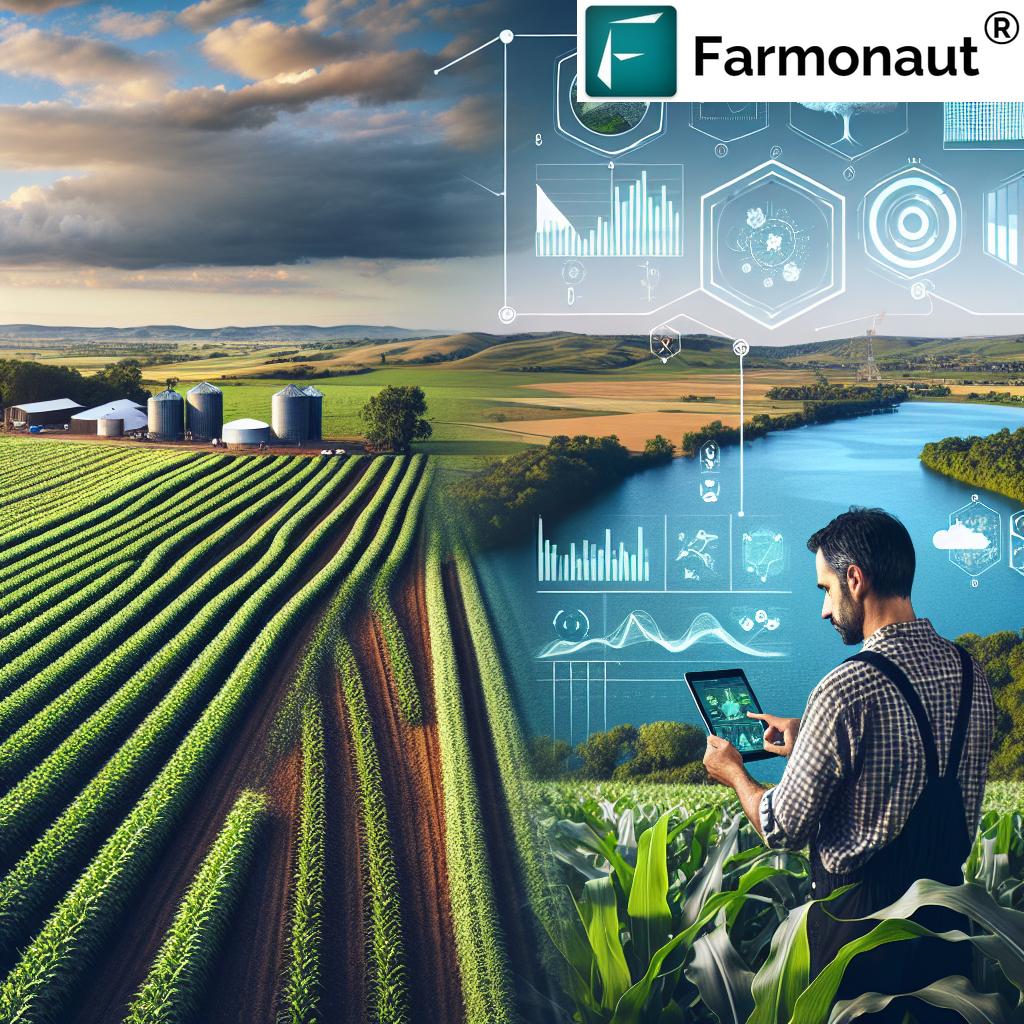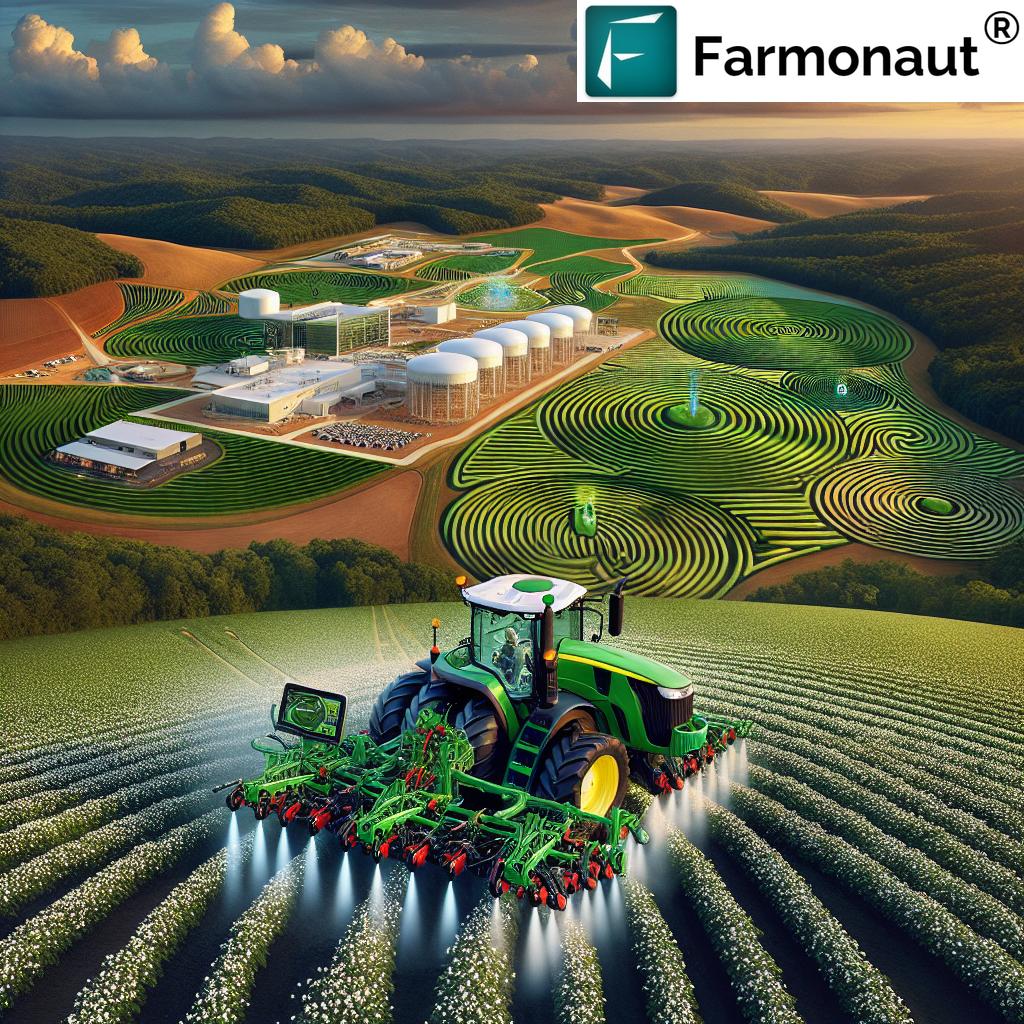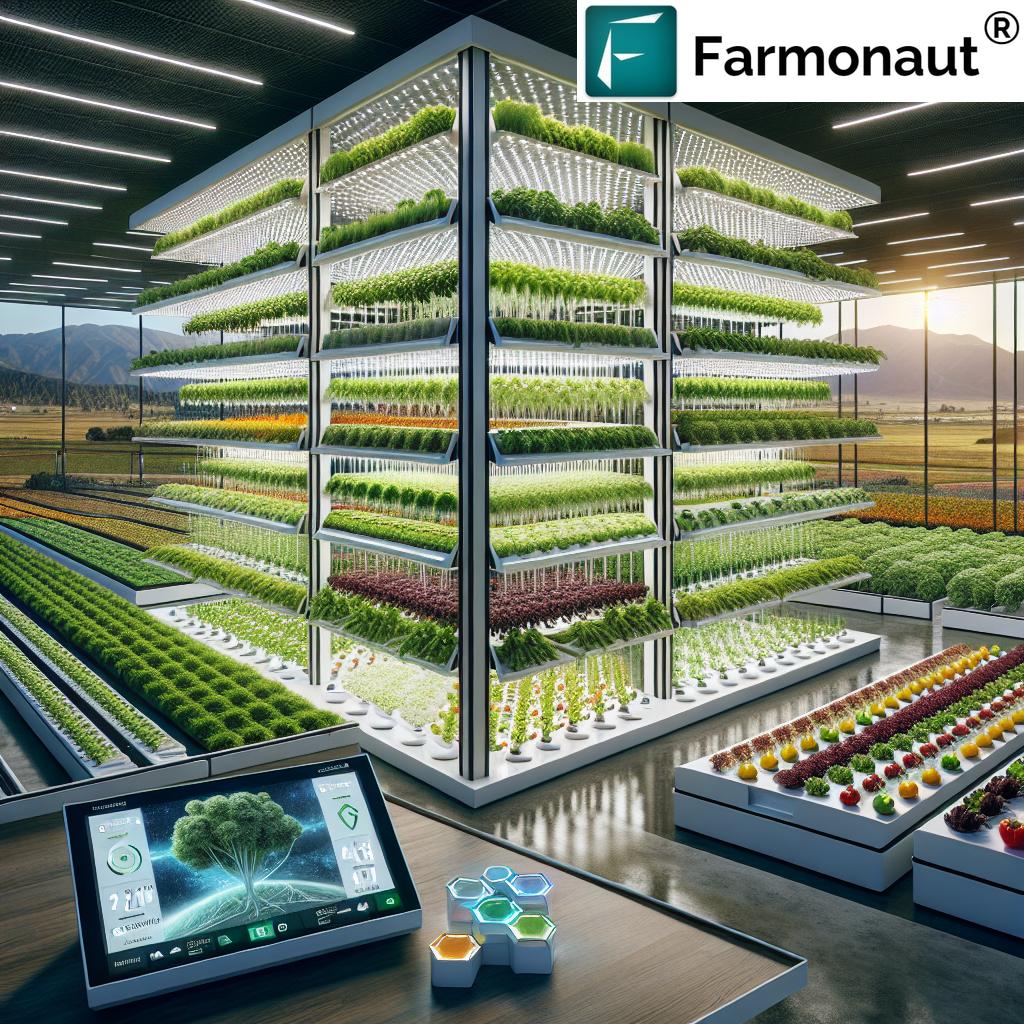Richmond, Diamond Head & More: 6 Top Farmers Markets 2026
Table of Contents
- Farmers Markets Impact Comparison Table
- Summary: Farmers Markets as Catalysts in 2026
- Nurturing Sustainable Agriculture Through Local Farmers Markets
- Supporting Local Economies & Community Resilience: The Economic Power of Markets
- Promoting Food Security and Access Across Communities
- Integration of Farmers Markets with Forestry, Mining & Infrastructure
- The Role of Advanced Technology in Advancing Agriculture, Mining & Infrastructure
- Get to Know the Top 6 Farmers Markets in 2026
- How Our Satellite Solutions Support Sustainable Food Systems
- Frequently Asked Questions About Farmers Markets (2026)
“By 2026, over 65% of Richmond’s local farms are projected to supply produce through farmers markets.”
Farmers Markets Impact Comparison Table
Farmers markets are vital catalysts for sustainable agriculture, economic growth, and community resilience, particularly in rapidly changing agricultural landscapes. Below is our comprehensive Farmers Markets Impact Comparison Table, highlighting how each leading market—Richmond Farmers Market, Diamond Head Farmers Market, Fond du Lac Farmers Market, East End Farmers Market, Red Apple Farmers Market, and Fenton Farmers Market—drives sustainability and enriches community life. These insights showcase estimated annual visitors, active local vendors, key sustainable practices, economic impact, and quantifiable environmental benefits, reflecting their powerful role in the food system of 2026.
| Market Name | Estimated Annual Visitors | Number of Local Vendors | Sustainable Practices Implemented | Estimated Annual Revenue for Local Economy (USD) | Environmental Benefits |
|---|---|---|---|---|---|
| Richmond Farmers Market | 230,000 | 120 | Organic Certification, Zero-Waste Initiative, Soil Conservation | $5,400,000 | ~380 tons CO₂ saved (local sourcing, reduced packaging) |
| Diamond Head Farmers Market | 180,000 | 95 | Integrated Pest Management, Renewable Energy, Composting | $4,170,000 | Significant water savings, 42% reduction in plastic use |
| Fond du Lac Farmers Market | 145,000 | 76 | Organic Produce, Minimal Packaging, Local Transport Only | $3,460,000 | 220 tons CO₂ saved, 65% local waste composted |
| East End Farmers Market | 120,000 | 60 | Sustainable Irrigation, Heirloom Seeds, Solar Energy Stalls | $2,800,000 | ~190 tons CO₂ saved, 52% solar power adoption |
| Red Apple Farmers Market | 98,000 | 49 | No Synthetic Pesticides, Closed-Loop Water System | $1,980,000 | Close to 100 tons CO₂ saved, >40% packaging reduction |
| Fenton Farmers Market | 83,000 | 42 | Organic, Rainwater Harvesting, Local Youth Employment | $1,350,000 | ~60 tons CO₂ saved, 25% plastic-free operations |
Summary: Farmers Markets as Catalysts for Sustainable Agriculture & Local Economies in 2026
In 2026, farmers markets such as Richmond Farmers Market, Diamond Head Farmers Market, Fond du Lac Farmers Market, East End Farmers Market, Red Apple Farmers Market, and Fenton Farmers Market continue to play a crucial role in advocating for sustainable agriculture, supporting local communities, and revitalizing regional economies. They embody resilient, localized food systems that address contemporary agricultural challenges, promote food security, and champion environmental stewardship.
Nurturing Sustainable Agriculture Through Local Farmers Markets
Why Farmers Markets Are Essential in 2026
As climate change and rising environmental concerns intensify, sustainable agricultural practices have become indispensable. Farmers markets provide direct linkages between producers and consumers, incentivizing eco-friendly production methods while fostering a culture of sustainability. The strategic proximity of markets—such as the Richmond and East End Farmers Markets—to urban and suburban centers reduces the carbon footprint associated with long-haul transportation and extended storage.
- Organic & Conservation Practices: At Richmond Farmers Market, many vendors prioritize organic certification, integrated pest management, and soil conservation techniques. These reduce chemical use, preserve biodiversity, and support healthier crop cycles.
- Minimal Packaging, Reduced Waste: Markets such as Fond du Lac and Red Apple empower farmers to sell produce with minimal packaging, reducing both energy consumption and plastic waste—directly advancing sustainability goals in food systems.
- Soil and Water Conservation: With vendors embracing optimal irrigation and composting, markets serve as platforms for education and demonstration—helping consumers understand the environmental benefits of purchasing locally and sustainably.
To further enable transparency, solutions like blockchain-based traceability empower agricultural stakeholders to certify sustainability claims and build consumer trust in locally grown, organic produce. Leveraging traceability tools enables better market access, meets rising demand for sustainably grown food, and assures customers of ethical practices—especially at high-profile markets like Diamond Head Farmers Market.
Fostering Awareness & Adoption of Sustainable Methods
One of the greatest benefits of farmers markets is their role as educational platforms. By closely connecting with customers, vendors at the East End and Red Apple markets routinely educate on integrated pest management, sustainable soil practices, and the value of biodiversity. Through signage, direct conversation, and workshops, they foster greater consumer awareness and stimulate demand for sustainable products.
Less Transportation, More Freshness & Environmental Gains
Through shorter supply chains and direct farm-to-consumer relationships, farmers markets like Fond du Lac and Fenton cut emissions associated with supply and logistics. This reduces overall carbon footprint from farm to table, supporting regional food security while stimulating local economies. Food retains more nutrients when it’s freshly harvested and quickly reaches the market, delivering direct health and flavor benefits to consumers.
Supporting Local Economies & Community Resilience: The Economic Power of Markets
At their heart, farmers markets are robust economic engines for both rural and semi-rural areas. Small-scale farmers—like those spotlighted at the Fenton Farmers Market—rely on these markets as a primary income source. They are able to maintain viable, small-scale farming operations despite the competition from large, industrial agricultural enterprises.
- Direct Sales, Better Incomes: Producers benefit from favorable margins by selling directly to consumers, bypassing intermediaries and retaining a higher share of profits.
- Entrepreneurship Opportunities: Farmers markets foster diverse entrepreneurial activity. Artisans, local food processors, and micro-businesses often use the market’s vibrant customer base to launch or scale their ventures, expanding the entrepreneurial ecosystem in local communities.
- Local Circulation of Wealth: Since spending occurs within the region, farmers markets keep wealth flowing locally, powering sustained economic resilience and helping marginalized areas recover more swiftly from disruptions.
- Job Creation: Direct and indirect employment opportunities abound, especially as markets need managers, logistics, and skilled workers in food preparation, crafting, and education.
Farmonaut’s fleet management solutions
enable agricultural businesses to optimize logistics and resource use, reducing operational costs and increasing efficiency at markets across the region.
Farmers markets have shown to be especially resilient in the face of economic change. Their decentralized and decentralized supply systems can adapt flexibly to challenges, including those introduced by pandemics or global supply chain interruptions, enabling regional economies to recover rapidly and foster community self-sufficiency.
“Diamond Head’s market vendors report a 40% increase in community engagement compared to traditional retail outlets.”
Looking ahead, this resilience will become even more critical as the climate and market conditions continue to evolve in 2026 and beyond.
Promoting Food Security and Access Across Communities
Farmers markets are key to promoting food security by improving access to fresh, nutritious food—especially in urban food deserts and rural communities. Initiatives at local markets—in particular, Diamond Head Farmers Market and East End Farmers Market—include subsidized produce voucher programs and sliding-scale markets for low-income families, making healthy food choices attainable across all demographics.
- Nutritional Diversity: With vendors bringing a wide variety of crops, including heirloom vegetables and heritage grains, markets fulfill the dietary needs of multicultural communities while advancing the preservation of regional food cultures.
- Awareness & Education: Through hands-on activities and community events, markets raise awareness about healthy eating habits, reducing risk factors for diet-related chronic diseases.
- Food Security Resilience: By decentralizing the food supply, markets reduce dependencies and vulnerabilities associated with distant, industrial food systems.
For farmers needing affordable financing, Farmonaut’s crop loan and insurance verification services can help support more equitable access to capital—facilitating increased sustainability and food access in underserved rural areas.
- Year-Round Access: Improvements in infrastructure—such as covered stalls, cold storage, and digital payments—are increasing food access all year at Fenton and Fond du Lac markets.
- Digital Innovation: The introduction of mobile platforms is making produce pre-ordering and contactless payments more widespread, further broadening access in 2026.
Farmonaut’s agro-admin platform provides real-time field insights for scalable management of larger supply chains, reducing food waste and improving planning to further strengthen the food security net.
Market-driven approaches will be essential for building more equitable, climate-resilient communities in the coming years.
Integration of Farmers Markets with Forestry, Mining & Infrastructure
While farmers markets are focused on agriculture, their success relies on symbiosis with forestry, mining, and local infrastructure. Sustainable forestry improves biodiversity, water quality, and soil moisture, which directly enhance food crop yield and health. Similarly, responsible mining ensures arable land and clean water remain available for agricultural production.
- Infrastructure Investment: Modern infrastructure—roads, solar-powered cold storage, weather-resistant market halls, and digital payment terminals—maximizes market efficiency, lengthens season duration, and improves year-round product availability.
- Environmental Impact Monitoring: Harnessing real-time tracking, like Farmonaut’s carbon footprinting tools, supports markets’ sustainability by measuring and optimizing resource use across interconnected sectors.
- Water & Soil Management: Integrated conservation across sectors maintains healthy watersheds and replenished soils, vital for high-yield sustainable farming at scale—especially at regional markets like Fond du Lac.
- Plastic & Packaging Reduction: Interlinkages with recycling and composting initiatives support circular economies, modeled by high-performing markets across the board.
Farmonaut’s satellite API
delivers automated, near real-time analytics for agriculture, mining, and infrastructure, facilitating data-driven ecosystem stewardship.
- API Developer Docs: Access developer docs for integration and unlock custom sustainability insights.
The Role of Advanced Technology in Advancing Agriculture, Mining & Infrastructure
Advanced technology has become integral to efficient and sustainable agricultural systems. Platforms leveraging satellite and AI-driven analytics—like those provided by Farmonaut—play a pivotal role in real-time monitoring, resource management, and strategic planning for food security.
- Satellite-Based Monitoring: Enables farmers and infrastructure managers to monitor crops, soil health, or supply chain bottlenecks for timely interventions.
- AI-Based Advisory Systems: Provide real-time, actionable advice based on remote sensing and historical data—improving yield, pest resilience, and efficiency across the agricultural spectrum.
- Blockchain for Trust: Secure traceability from farm to market reduces fraud and increases consumer trust in sustainable products.
- Environmental Impact Tracking: Real-time carbon and water use footprinting provides both compliance and optimization capabilities for rural food systems.
- Access to Financing: Remote verification streamlines crop loans and insurance, empowering even smallholder farmers to access critical funding for sustainable operations.
Explore carbon footprinting & sustainability tracking
for an inside look at how responsible agricultural practices are measured and improved.
Get to Know the Top 6 Farmers Markets in 2026
1. Richmond Farmers Market
- Location: Richmond, a vibrant city with deep agricultural roots, particularly on the urban-rural fringe.
- Main Features: Over 120 vendors; organic certification; robust zero-waste initiative; sustainable soil and water management.
- Environmental Impact: Massive local supply (over 65% of Richmond’s farms), reducing transport; significant carbon savings.
- Community Value: Weekly educational workshops and year-round accessibility through covered infrastructure and digital purchasing.
2. Diamond Head Farmers Market
- Location: Set near the iconic Diamond Head, serving a diverse urban community.
- Main Features: Award-winning integrated pest management, wide renewable energy adoption (solar-powered stalls), on-site composting and recycling.
- Community Value: High reported engagement (40%+ over traditional retail), major community wellness events.
- Environmental Impact: Water conservation programs, leading plastic reduction among metro-area markets.
3. Fond du Lac Farmers Market
- Location: Found in a semi-rural heartland, connecting farming heritage with new sustainable innovations.
- Main Features: Robust presence of small family farms, minimal packaging policies, hyper-local transportation.
- Environmental Impact: Broad community composting and water conservation programs.
4. East End Farmers Market
- Location: Borders an urban-core, providing an interface between diverse communities.
- Main Features: Solar-powered infrastructure, heirloom seeds, sustainable irrigation, and hands-on education programs.
- Community Value: Exceptional inclusivity, subsidized produce for low-income residents, multi-lingual vendor services.
5. Red Apple Farmers Market
- Location: Serves mid-sized communities, bridging regional producers to nearby suburban neighborhoods.
- Main Features: Strict organic standards, closed-loop water systems, targeted plastic reduction campaigns.
- Community Value: Known for heritage fruit and diverse vegetable offerings tailored for local tastes.
6. Fenton Farmers Market
- Location: A cornerstone of smaller towns, often the primary sales channel for local farms.
- Main Features: Rainwater harvesting, youth employment programs, seasonal farm-to-table events.
- Infrastructure: Focus on year-round operations through innovative, sustainable market design.
How Our Satellite Solutions Support Sustainable Food Systems
At Farmonaut, we are dedicated to making advanced satellite-driven insights:
- Accessible: Our platform ensures that farmers, agricultural businesses, infrastructure managers, and policy-makers have instant access to multispectral satellite images, enabling timely action and efficient operation—whether for crops, facilities, or logistics.
- Data-Driven: AI-based advisory systems, such as our Jeevn AI, help users stay ahead of weather risks, pest threats, and market changes—bolstering economic outcomes and food security.
- Transparent: Blockchain-based traceability fosters trust between farmers, markets, and consumers by independently verifying every stage of the food and resource journey.
- Resource-Optimized: Our satellite tools for fleet management optimize energy, time, and costs—drastically reducing environmental impacts across markets and food value chains.
- Sustainable: We prioritize not only productivity, but also sustainability—helping users monitor carbon footprint, water use, and broader environmental impact for a better, climate-resilient future.
We remain committed to empowering agricultural communities worldwide, contributing to more secure, equitable, and environmentally responsible food systems.
Frequently Asked Questions About Farmers Markets (2026)
-
What role will farmers markets play in agricultural sustainability by 2026?
By 2026, farmers markets will serve as direct connections between sustainable producers and consumers. These venues support adoption of organic farming, promote biodiversity, and reduce carbon footprint by shortening supply chains. -
How do these markets benefit local economies?
They provide stable income for smallholder farmers, incentivize entrepreneurship, generate regional jobs, and keep money circulating locally—strengthening overall economic resilience. -
Are farmers markets effective for promoting healthy, diverse diets?
Yes. Markets offer fresh produce—including heritage and multicultural varieties—enabling communities to eat diverse, nutritionally rich diets. -
What infrastructure advances support farmers markets in 2026?
Investments in local roadways, covered market halls, cold storage, renewable energy, and digital payment tools enhance market efficiency, accessibility, and year-round availability. -
How does technology support sustainable agriculture and markets?
Technologies such as satellite imagery, AI-advisory systems, and blockchain traceability—like those used on platforms such as Farmonaut—enable real-time monitoring, resource optimization, environmental impact tracking, and transparent supply chains. -
Can farmers access financing more easily thanks to markets?
Yes. Through regional market stability and solutions like satellite-based crop loan and insurance verification, more farmers access cost-effective loans and insurance, fostering equitable growth. -
Do these markets only feature food, or are there other opportunities?
Farmers markets showcase food, crafts, and value-added products. They serve as entrepreneurial incubators, support artisans, and celebrate local identity and culture. -
How do markets collaborate with forestry and mining for sustainability?
While not directly collaborating, sustainable forestry and mining maintain the health of land, soil, and water—resource pillars for sustainable food production. Responsible land management enables ongoing agricultural productivity. -
What are examples of environmental practices at leading markets?
- Richmond: Zero-waste and certified organic.
- Diamond Head: Composting; renewable energy adoption.
- Fond du Lac: Waste reduction with local transport only.
- East End: Solar stalls and sustainable irrigation.
- Red Apple: No synthetic pesticides; closed-loop water system.
- Fenton: Rainwater harvesting and youth employment.
Conclusion: The Vital Role of Farmers Markets in 2026
The future of our food systems, environmental health, and economic vitality relies increasingly on community-driven initiatives such as Richmond Farmers Market, Diamond Head Farmers Market, Fond du Lac Farmers Market, East End Farmers Market, Red Apple Farmers Market, and Fenton Farmers Market. These markets are more than venues; they are catalysts for sustainable agriculture, economic growth, food security, and community resilience.
As climate shifts and global challenges intensify, farmers markets in 2026 continue to inspire innovation, foster local pride, and model best practices for sustainability worldwide. Connected by technology, strengthened by community, and driven by a commitment to stewardship, the markets highlighted here exemplify the most promising future for agriculture, local economies, and the environment.
For those committed to a healthier, eco-friendly future, supporting and learning from these markets is both a privilege and a responsibility.















